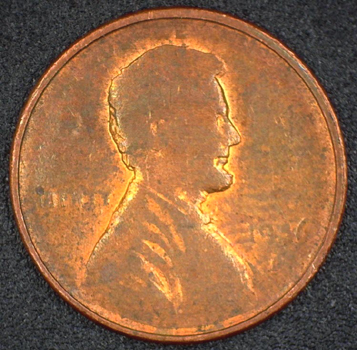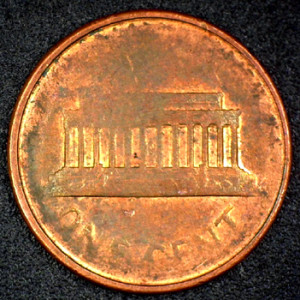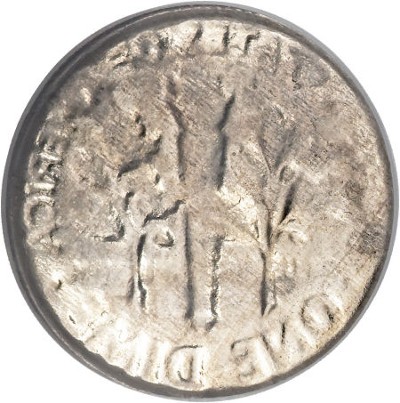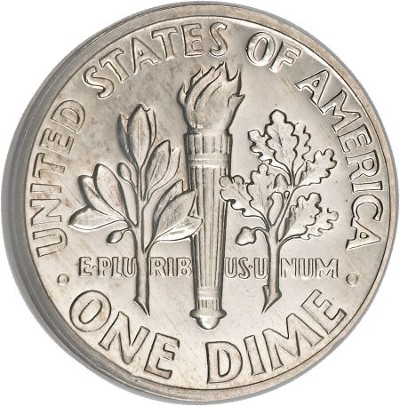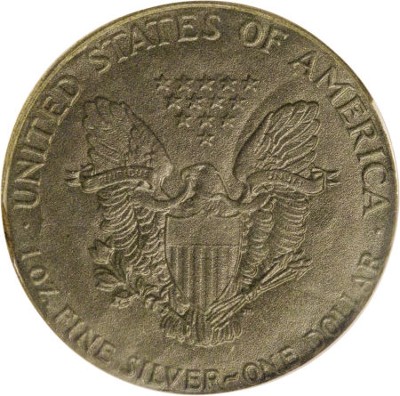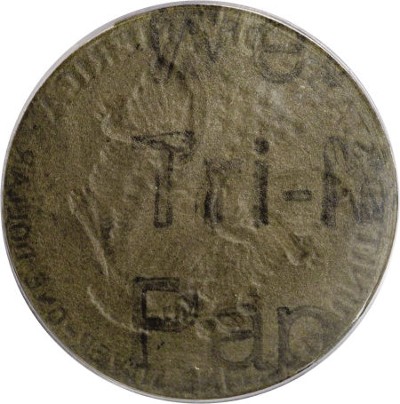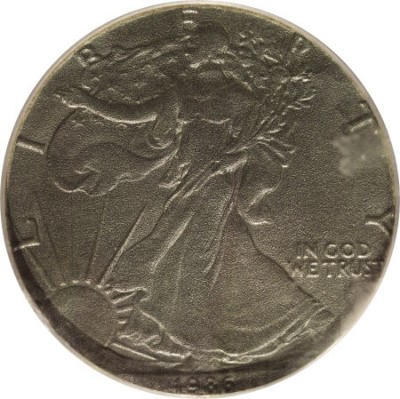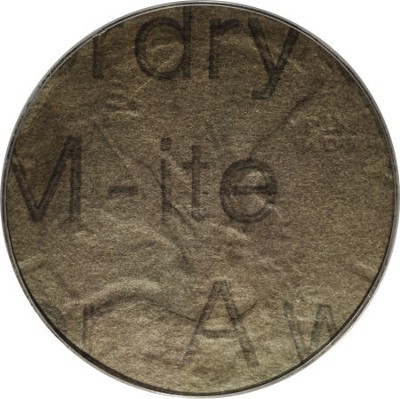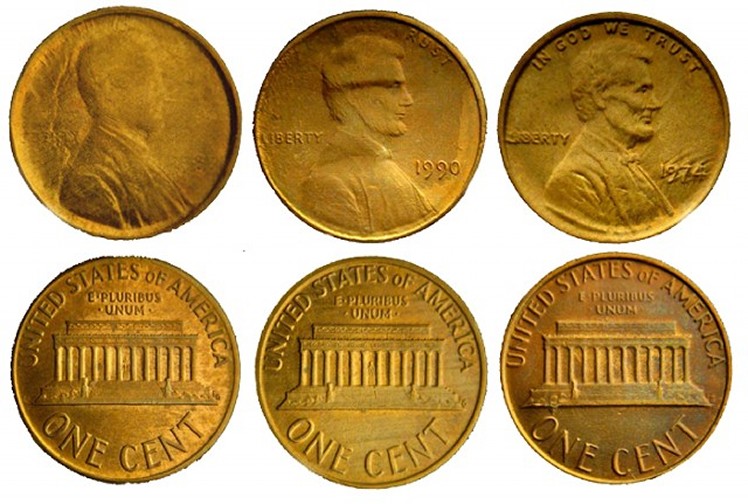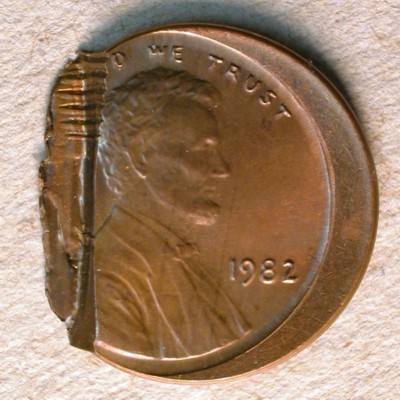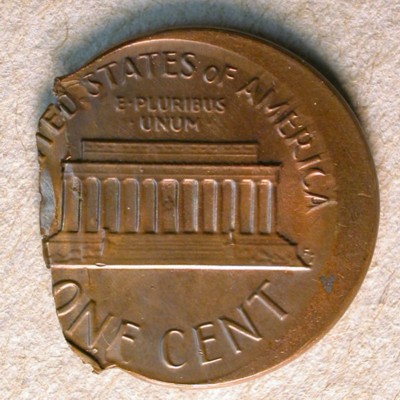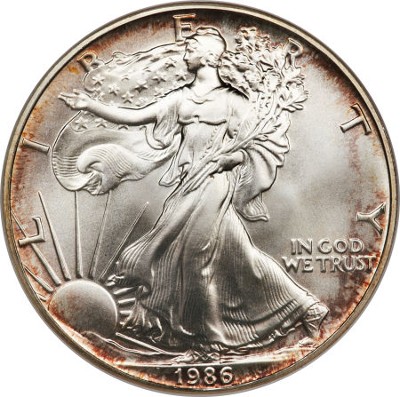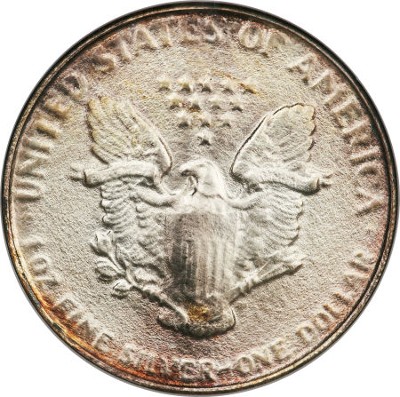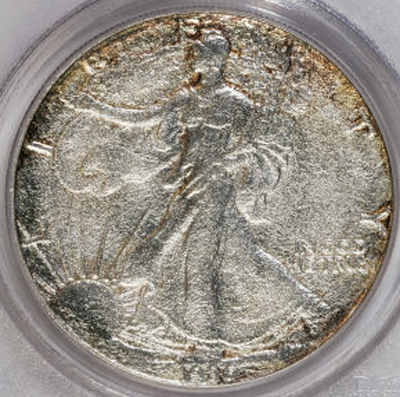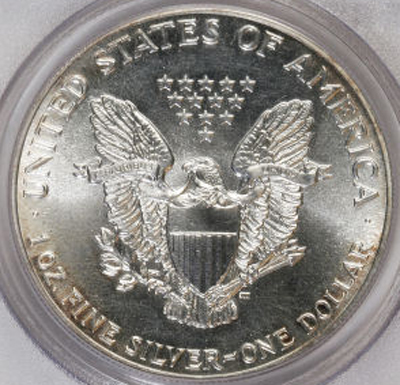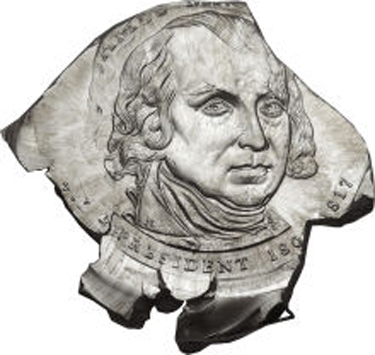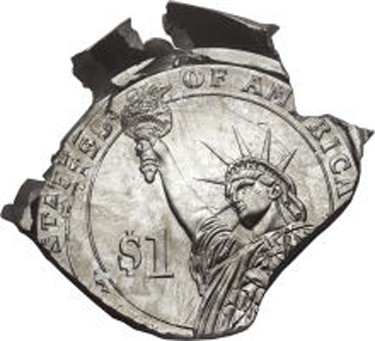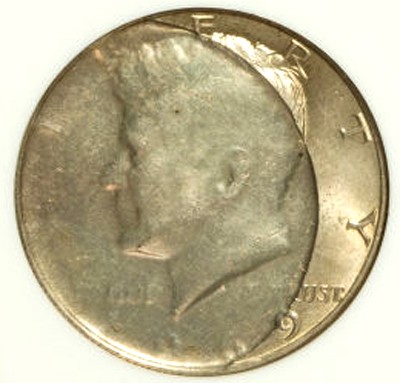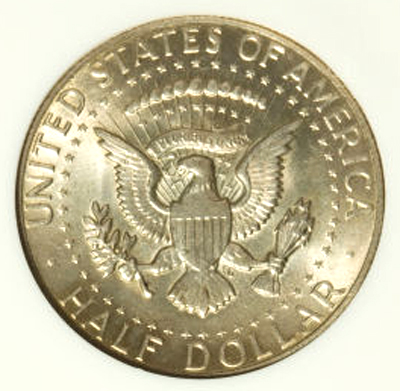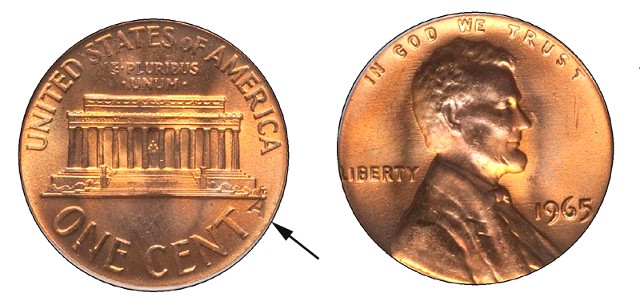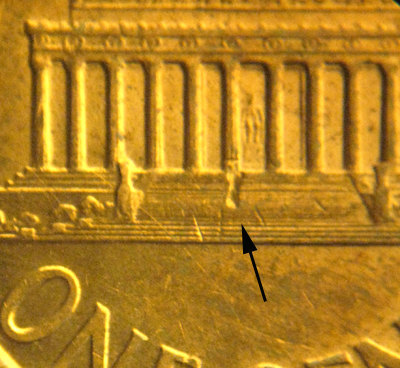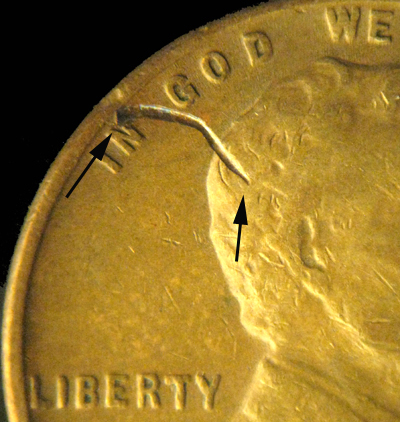PART VI. Striking Errors:
Struck Through Errors:
Struck Through “Grease”
Definition: The recesses of a die sometimes become clogged with compacted gunk generally composed of a mixture of lubricant, metal dust, and dirt. This material is sometimes called “die fill” but is more commonly referred to as “grease”. Die fill can be coarse or smooth, hard or viscous. It can fill isolated design elements (a “filled die” error) or can coat the entire die face. Coatings are sometimes so thick that the entire design is obscured.
The image below shows a 1984 Lincoln cent with the obverse and reverse design partly obscured by “grease”.
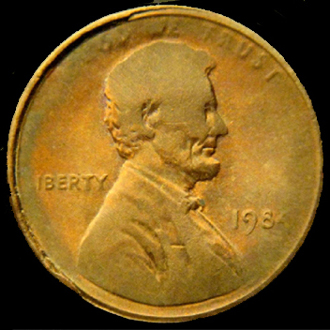

Here is another example of a Lincoln cent struck through grease fill which obscured both obverse and reverse of the coin. This coin is in the collection of Andrew Kezeli.
